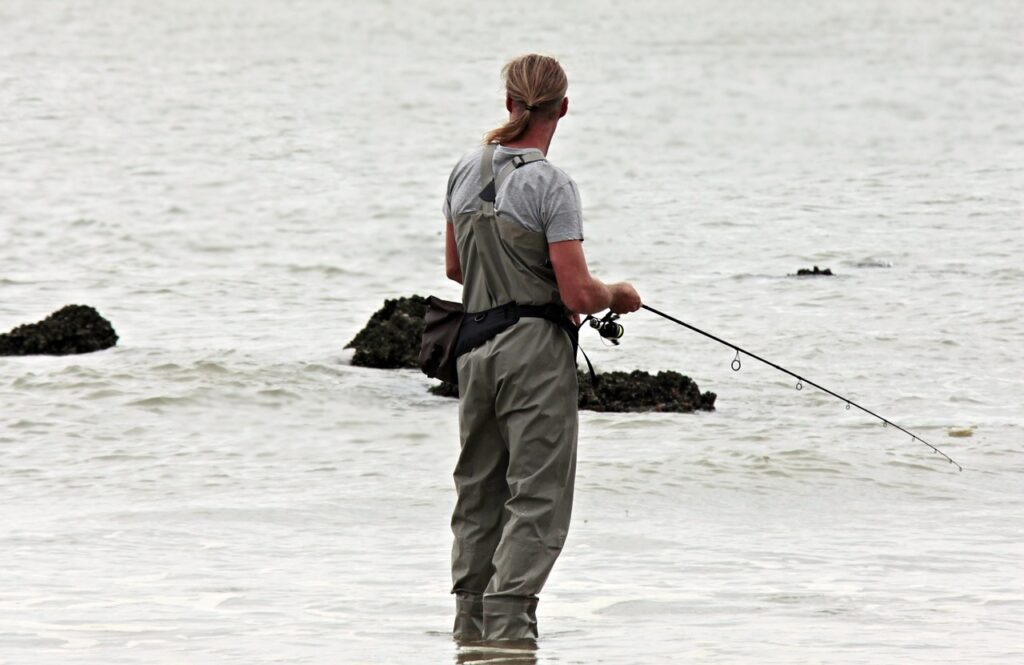
Welcome to the world of fly fishing! In this article, you will learn all about a weight-forward fly line and why it is such an essential component of your fly fishing gear. Whether you are a beginner or a seasoned angler, understanding the benefits and characteristics of a weight-forward fly line will greatly improve your casting accuracy and overall fishing experience. So sit back, relax, and let’s dive into the fascinating world of fly fishing! What Is A Weight-forward Fly Line?
Have you ever been confused about the different types of fly lines available for fly fishing? One type that you may have come across is the weight-forward fly line. But what exactly is a weight-forward fly line, and how does it differ from other types of fly lines?

Understanding Fly Lines
“Before we dive into what a weight-forward fly line is, let’s first understand the basics of fly lines. Fly lines are an essential component of fly fishing, as they are what allows you to cast your fly accurately and effectively. They come in various types, each designed for specific fishing conditions and techniques.”
Types of Fly Lines
“Fly lines come in different weights, tapers, and sinking rates. Some common types of fly lines include weight-forward, double taper, shooting taper, and sinking lines. Each type serves a different purpose and works best in specific fishing scenarios.”
What Is a Weight-forward Fly Line?
“A weight-forward fly line is a type of fly line that is engineered to make casting easier, especially for beginners. As the name suggests, the majority of the weight of the fly line is concentrated towards the front end, with a thinner running line at the back. This design allows for better control and accuracy when casting.”
Features of a Weight-forward Fly Line
“Weight-forward fly lines are easily distinguishable by their thicker and heavier front section, known as the ‘head.’ The head of the fly line is tapered to allow for smooth turnovers and accurate presentations. The thinner running line at the back of the fly line allows for increased line speed and distance during casting.”
Benefits of a Weight-forward Fly Line
“One of the main benefits of using a weight-forward fly line is its versatility. Whether you are casting short distances in small streams or long distances in large rivers, a weight-forward fly line can handle a wide range of fishing scenarios. Additionally, the design of the weight-forward fly line makes it easier to load the rod for smooth and efficient casting.”

Choosing the Right Weight-forward Fly Line
“When it comes to choosing the right weight-forward fly line, there are a few factors to consider. The weight of the fly line should match the weight of your fly rod for optimal performance. Additionally, the taper of the fly line should be selected based on the type of fishing you will be doing.”
Fly Line Weight
“The weight of a fly line is designated by a number ranging from 1 to 14, with higher numbers indicating heavier lines. It is crucial to match the weight of your fly line to the weight of your fly rod for proper casting mechanics. For example, if you have a 5-weight fly rod, you should use a 5-weight fly line.”
Fly Line Taper
“The taper of a fly line refers to the distribution of weight along the length of the line. Weight-forward fly lines come in different tapers, such as standard, long-belly, and saltwater tapers. The taper you choose should depend on the type of fishing you will be doing, whether it’s casting small dry flies or large streamers.”
Fly Line Color
“While not essential for performance, the color of a weight-forward fly line can play a role in visibility on the water. Brightly colored fly lines are easier to see in different light conditions, making it easier to track your line while casting. However, some anglers prefer stealthier colors to avoid spooking fish in clear water.”

Maintaining Your Weight-forward Fly Line
“Proper maintenance of your fly line is essential for optimal performance and longevity. By taking care of your weight-forward fly line, you can ensure smooth casting and minimal tangles while on the water.”
Cleaning Your Fly Line
“Regularly cleaning your weight-forward fly line is crucial for removing dirt, debris, and salt buildup that can affect casting performance. To clean your fly line, run a damp cloth along the length of the line while stripping it through your fingers. You can also use specialized fly line cleaners for a deeper clean.”
Storage and Line Dressing
“When storing your weight-forward fly line, avoid leaving it in direct sunlight or extreme temperatures, as this can cause the line to degrade prematurely. Additionally, applying a line dressing or conditioner to your fly line can help keep it supple and slick for smooth casting. Be sure to follow the manufacturer’s recommendations for line care.”

Tips for Casting with a Weight-forward Fly Line
“Once you have chosen the right weight-forward fly line and set up your rod and reel, it’s time to hit the water and start casting. Here are some tips to help you improve your casting with a weight-forward fly line.”
Practice Proper Casting Techniques
“Practicing proper casting techniques is essential for successful fly fishing. Focus on your timing, rhythm, and line control when casting with a weight-forward fly line. Start with shorter casts and gradually work your way up to longer distances as you become more comfortable with the line.”
Adjust Your Casting Stroke
“Adjusting your casting stroke to match the weight-forward fly line can improve your casting accuracy and distance. Make sure to load the rod properly by accelerating smoothly on the backcast and driving the line forward on the forward cast. Experiment with different casting angles and rod positions to find what works best for you.”
Use Water Tension to Your Advantage
“Utilizing water tension to your advantage can help you cast further and with less effort when using a weight-forward fly line. By allowing the line to straighten out fully on the backcast and using the water’s surface as a launchpad, you can achieve longer casts with minimal false casting.”

In Conclusion
“Understanding what a weight-forward fly line is and how to use it can greatly improve your fly fishing experience. Whether you are a beginner or a seasoned angler, incorporating a weight-forward fly line into your setup can lead to more successful casts and enjoyable days on the water. Experiment with different weights, tapers, and casting techniques to find what works best for your fishing style.”